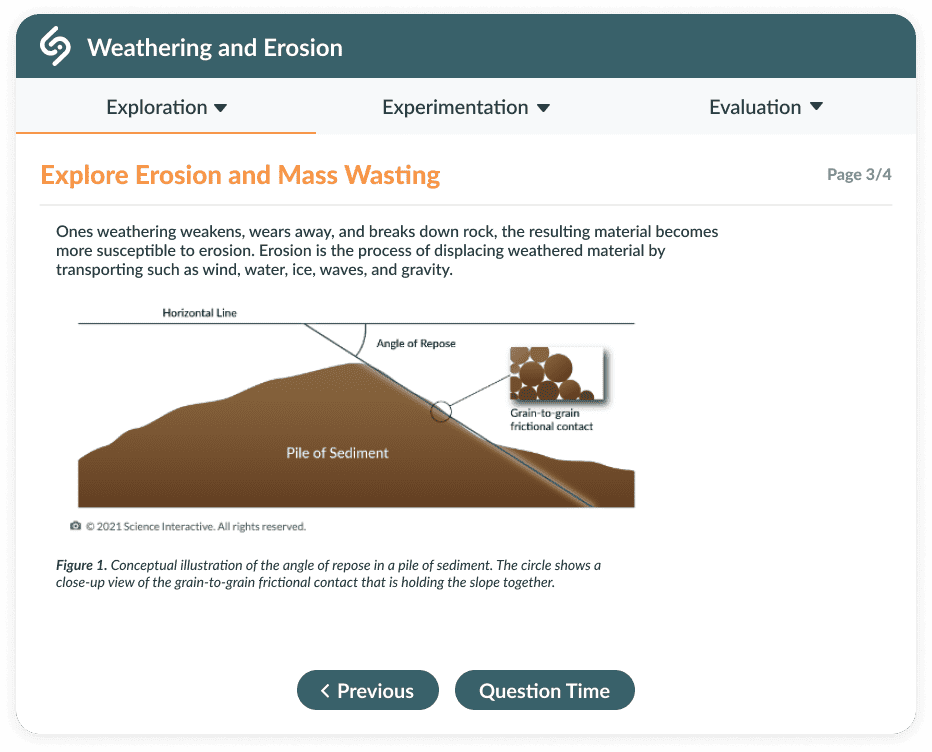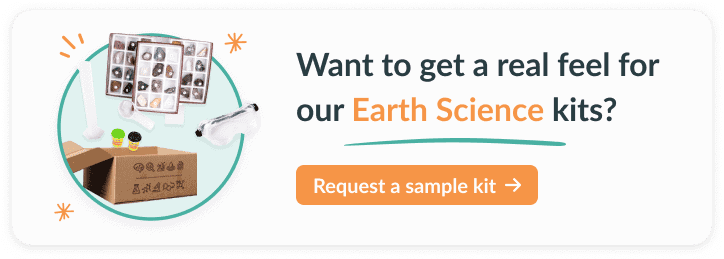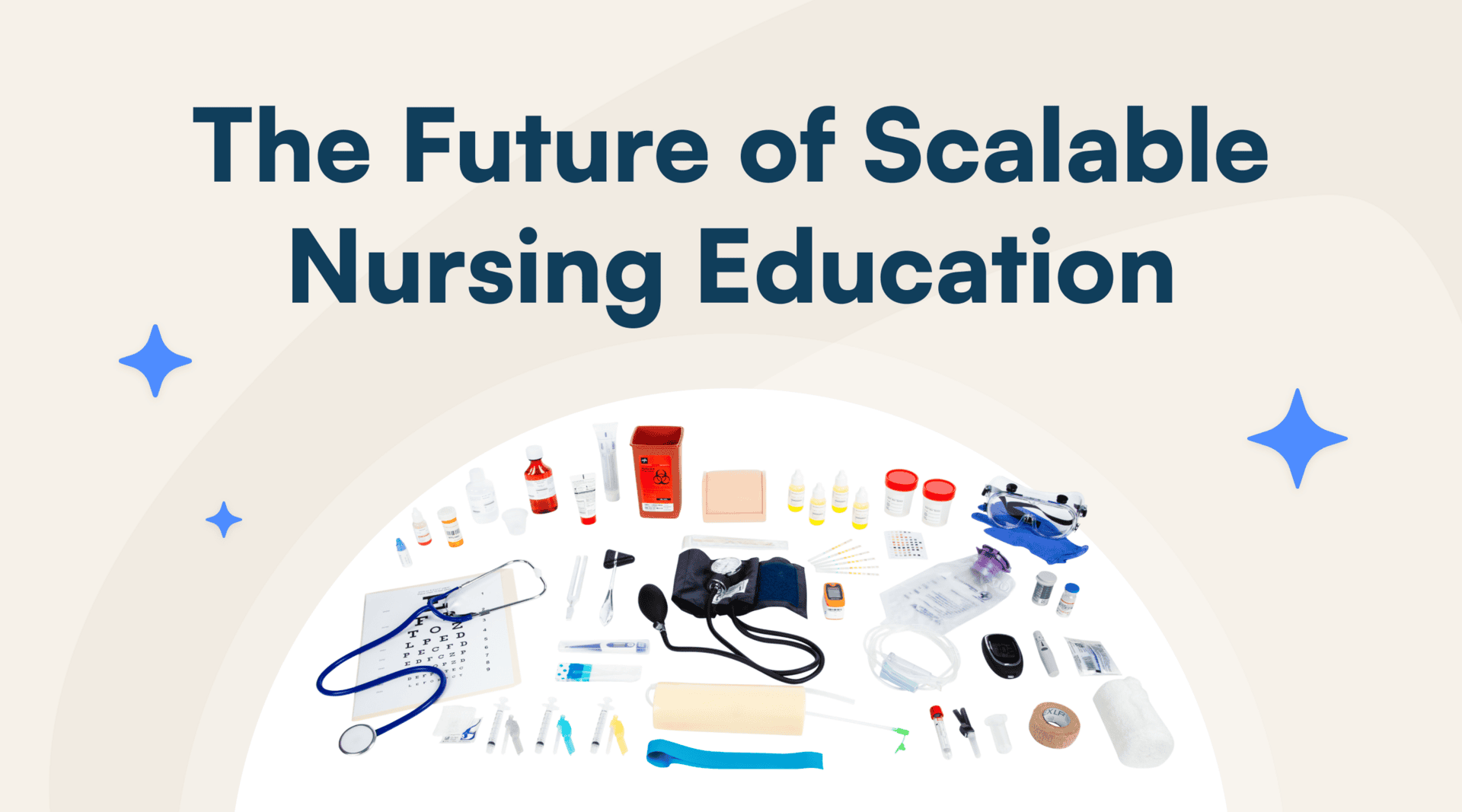We know replicating the look and feel of an on-campus Earth Science lab online is challenging. From ensuring the same level of quality and rigor to feeling limited in options when it comes to curriculum, you’re often working to bring together labs from multiple sources to meet learning outcomes and objectives.Then if you want your students to have the experience of real, hands-on scientific investigation, you’re probably spending a significant amount of time figuring out how to source materials and get lab kits to students. That doesn’t leave a whole lot of time for feedback or deep analysis — the higher impact practices that build critical thinking skills and fuel student growth.
Authentic Labs Developed Specifically for Online Earth Science Courses
The good news is that it doesn’t have to be like that anymore — and it shouldn’t, as earth science has started to see a steady rise in popularity!
Not surprisingly, student demand continues to increase for online options. Last year, institutions reported a 36% growth in fully online programs and 20% growth in hybrid programs, in the face of declining face-to-face enrollment. Meanwhile, demand for earth science-related degrees is also increasing. For example, employment of environmental & earth science specialists is projected to grow 6% from 2022 to 2032, faster than the average for other occupations.
What’s more, students taking online science labs today are expecting a learning experience similar to that of on-campus labs. In data collected from over 1,200 students for the 2023 Annual Lab Report, 80% of students said they wanted a hands-on component in their online labs, which underscores the 74% who took online courses with only virtual simulations and said they would have felt more confident applying what they learned in their courses to real-world situations if their online labs had a hands-on component.
What’s clear is that there is a critical opportunity to improve students’ scientific literacy and help them better understand the world around them, even if they don’t plan to pursue a degree in the sciences.
That’s why we launched our newest Quality Matters-certified discipline, Earth Science — with lab kits purposefully developed for Earth Science lab courses. You can now deliver a hands-on Earth Science learning experience that allows your students to go deep into topics like mineral and rock identification, exploring landform development, examining the effects of weathering and erosion, and investigating the causes and impact of climate change — just as they would in on-campus labs.
With the highest quality curriculum developed by PhD scientists, ready-made hands-on kits, and a lab management platform that allows you to tailor components of the curriculum, you can:
- create an active online learning environment comparable to the on-campus experience that promotes deeper student engagement, critical thinking, and problem solving.
- replicate real-world lab experiences online, giving students the chance to use lab-grade materials and equipment as they would in an on-campus lab facility.
- ensure students are ready at the start of the semester with hands-on kits designed to be cost effective and ready to ship.
- use your time to focus on what matters most: instruction and student feedback.
We offer more than 450 labs across 13 Quality-Matters certified disciplines, so instructors can easily tailor any of the curricula to the labs they’ve already included in their course.

Putting 3 Earth Science Labs Under the Microscope
To give you an idea of the kinds of hands-on Earth Science labs your students could be conducting, we’re highlighting three examples below of our more than 30 hands-on Earth Science labs.
Minerals
In this lab, students will examine a variety of minerals in order to develop an ability to identify common minerals found at the Earth’s surface. This hands-on lab allows students to test, observe and describe the physical properties of those minerals.
Lab Learning Objectives
- Calculate the specific gravity of a set of minerals
- Observe and describe the physical properties of a set of minerals, and
- Interpret experimental results to identify the unknown minerals
The hands-on kit for this lab includes all of the PPE and lab-grade materials that are safe for student use, including:
- Identification kit
- 10 ml of Hydrochloric acid
- Graduated cylinder & pipettes
- Black streak plate, white streak plate, glass plate, and digital scale
- Hand lens, gloves, and safety goggles
- Magnet and iron nail

Weathering & Erosion
In this lab, students see how weathering and erosion change the Earth’s surface and examine the impact of these processes on our planet.
Lab Learning Objectives
- Quantify the effects of chemical and mechanical weathering on the mass of materials
- Describe the impact of mechanical and chemical weathering on the appearance of materials
- Determine the point of slope failure for different materials
The hands-on kit for this lab includes all of the PPE and lab-grade materials that are safe for student use:
- Silicon carbide , acetic acid
- Beakers, graduated cylinder, digital scale, plastic jab with screw top, protractor, and underpad
- Fine gravel & sand, top soil, granite, shale, and limestone
- Gloves and safety goggles

Acid Rain
In this lab, students will better understand the concept of chemical erosion and the effects of acid rain on different rocks in our environment.
Lab Learning Objectives
- Model acid deposition using nitrogen oxides and bromocresol green
- Examine how a buffer affects acid deposition
- Measure the effects of acid deposition on different types of rocks
The hands-on kit for this lab includes all of the PPE and lab-grade materials that are safe for student use:
- Acetic acid
- Experiment bag that includes bromocresol green, hydrochloric acid, potassium nitrate, sodium bicarbonate, and a thin-stemmed pipette
- Petric dish, plastic beaker,
- Digital scale and well plate
- Gloves, and safety goggles
- Limestone & granite rock


“At the end of the day, while there may be some limitations in our digital world, being able to offer your Earth Science lab online shouldn’t be one of them. With a Quality-Matters certified discipline, hands-ons and digital labs developed by PhD scientists, ready-made lab kits, and a flexible lab management platform to deliver all of your content, we’ve built an Earth Science offering that allows you to replicate the quality and rigor of an on-campus lab experience. You can give your students the chance to examine the crystal structure of a granite sample or observe the crystallization of supercooled sodium acetate—real and meaningful experiences that allow them to apply concepts to the world around us.”
Cait Runne-Janczy, Ph.D., Chief Academic Officer, Science Interactive
An All-in One Solution for Online Earth Science Labs
From ensuring the same quality and rigor as on-campus lab courses to customizing curriculum to suit your instructional style, we know there are a lot of moving parts you have to think about when it comes to offering earth science labs online.
That’s why we make delivering an authentic online lab experience easy! We have more than 450 rigorous hands-on and digital experiments to meet the needs of your course — all of which you can customize or use as-is. You can choose ready-made kits or customize a kit to meet your specific course requirements. Then, simply select the best blend of experiments to meet your course goals – while staying within budget.
At the same time, you have the opportunity to expand access to a discipline in high demand while boosting enrollment. With a comprehensive approach to shifting science lab courses online — complete with curriculum aligned to Quality Matters standards, lab-grade hands-on kits, and a lab management platform to deliver your content — you can be sure you’re giving students in earth science courses the kind of online learning experience that drives better student outcomes.
Discover more articles

Science Interactive Launches New Nursing Fundamentals

What Clinical-Ready Actually Looks Like (And How to Get There Sooner)


